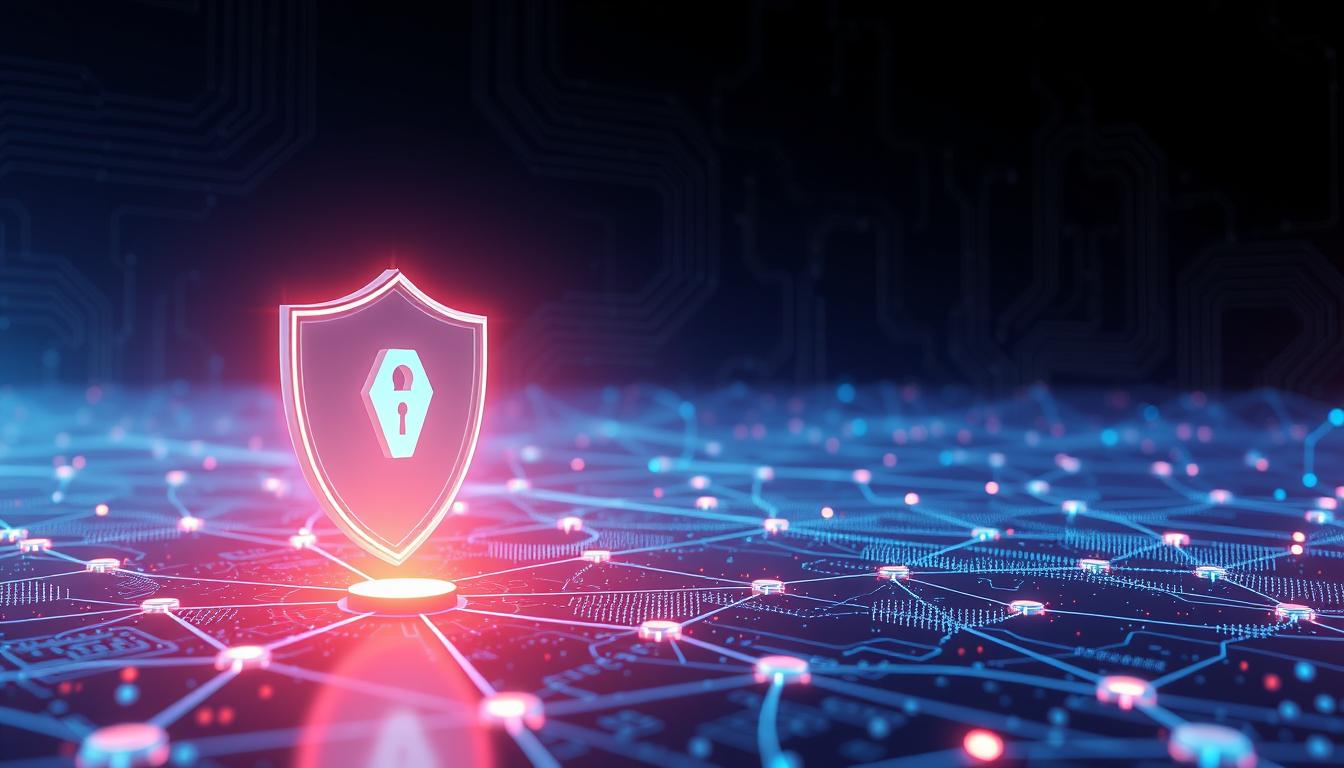In today’s increasingly digital landscape, where cybercriminals lurk in the shadows, the need for robust threat detection has never been more crucial. As we entrust our most sensitive data and critical systems to the digital realm, it is paramount that we fortify our defences and stay one step ahead of the ever-evolving cyber threats. This article delves into the cutting-edge techniques and strategies that can effectively protect your digital assets, empowering you to safeguard your virtual world against a myriad of cyber risks.
Threat detection is the cornerstone of modern cybersecurity, enabling organizations to proactively identify and mitigate potential security breaches before they can wreak havoc. By leveraging a comprehensive approach to threat detection, you can gain a deeper understanding of the threat landscape, assess your vulnerabilities, and implement robust security measures to shield your data, networks, and systems from malicious actors. In the pages that follow, we will explore the essential elements of threat detection, equipping you with the knowledge and tools to fortify your digital defences.
Key Takeaways
- Threat detection is crucial for safeguarding digital assets in the face of evolving cyber threats.
- Proactive cybersecurity strategies, malware analysis, and network monitoring are essential components of effective threat detection.
- Vulnerability scanning and security analytics can help identify and address potential security weaknesses.
- Incident response and threat intelligence are vital for mitigating the impact of cyber attacks and staying ahead of the curve.
- A holistic approach to data protection, leveraging the power of security analytics and threat intelligence, is key to securing your digital world.
Proactive Cybersecurity: The Essence of Threat Detection
In the dynamic digital landscape, proactive cybersecurity is the cornerstone of effective threat detection. By anticipating and addressing potential risks, organizations can fortify their defences and safeguard their valuable assets from cyber threats.
Identifying Potential Risks
The first crucial step in proactive cybersecurity is to identify potential risks that could compromise the security of your digital infrastructure. This involves conducting risk assessments to uncover vulnerabilities, analyzing threat intelligence, and understanding the evolving tactics employed by cyber attackers.
- Thorough risk assessment to identify vulnerabilities in your systems and network
- Comprehensive analysis of threat intelligence to stay informed about the latest attack trends and methods
- Continuous monitoring and evaluation of your security posture to address emerging threats
Developing a Comprehensive Security Strategy
Armed with a deep understanding of the risks, the next step is to develop a comprehensive security strategy that encompasses multiple layers of defence. This holistic approach ensures that your organization is well-equipped to detect, prevent, and respond to a wide range of cyber threats.
- Implement robust vulnerability scanning to identify and address security gaps
- Deploy advanced security solutions to detect, prevent, and mitigate cyber attacks
- Establish robust incident response and recovery protocols to minimize the impact of successful attacks
By embracing proactive cybersecurity measures, organizations can enhance their ability to detect and respond to emerging threats, ultimately safeguarding their digital assets and maintaining the trust of their stakeholders.
“The best defense is a good offense. Proactive cybersecurity is the key to staying one step ahead of cyber threats.”
Malware Analysis: Unraveling the Intricacies of Cyber Threats
In the ever-evolving landscape of cybersecurity, malware analysis has emerged as a crucial component in the fight against cyber threats. This discipline delves into the intricate workings of various malware strains, equipping security professionals with the knowledge to detect, prevent, and respond to the latest malicious software targeting businesses and individuals alike.
Malware analysis involves a multifaceted approach that encompasses several key steps. First and foremost, researchers must identify and isolate the malware sample, examining its behaviour, structure, and underlying code. This process often involves the use of specialized tools and techniques, such as dynamic analysis, static analysis, and reverse engineering, to uncover the malware’s true nature and potential impact.
- Dynamic analysis: Observing the malware’s execution in a controlled environment to understand its behaviour and identify its capabilities.
- Static analysis: Examining the malware’s code, structure, and characteristics without executing it, to gain insights into its inner workings.
- Reverse engineering: Dissecting the malware’s code to uncover its underlying logic and mechanisms, often using specialized software and skills.
Armed with these insights, security professionals can then develop effective countermeasures and deploy them to protect against the identified threats. This may involve the creation of signatures, the development of detection and prevention mechanisms, or the implementation of tailored security policies and procedures.
| Malware Type | Characteristics | Common Mitigation Strategies |
|---|---|---|
| Ransomware | Encrypts files and demands a ransom payment for their release | Regular data backups, access control, and employee training |
| Trojan Horses | Disguise themselves as legitimate software to gain unauthorized access | Robust software vetting, application whitelisting, and network monitoring |
| Botnets | Networks of infected devices controlled by a central command and control server | Effective patch management, network segmentation, and incident response planning |
By staying vigilant and continuously refining their malware analysis capabilities, security teams can arm themselves with the knowledge and tools needed to combat the ever-evolving threats in the digital landscape. This proactive approach is essential in safeguarding organizations and individuals from the devastating consequences of cyber attacks.
“Malware analysis is not just a skill, but a mindset – a relentless pursuit of understanding the enemy to better defend against their attacks.”
Network Monitoring: The Vigilant Gatekeeper
In today’s digital landscape, network monitoring plays a pivotal role in safeguarding our systems from evolving cyber threats. By closely monitoring network traffic and detecting anomalies, we can proactively identify and mitigate potential security breaches before they cause significant damage. This section delves into the intricacies of network traffic analysis and intrusion prevention systems (IPS), equipping you with the knowledge to strengthen your organization’s security posture.
Traffic Analysis and Anomaly Detection
Comprehensive network monitoring involves carefully analyzing the flow of traffic across your network. By employing advanced analytics and machine learning algorithms, security professionals can identify patterns, trends, and anomalies that may indicate malicious activity. This traffic analysis enables the early detection of potential intrusion attempts, allowing for swift response and mitigation.
- Identify unusual spikes in network activity or data transfers
- Detect suspicious login attempts or unauthorized access to sensitive resources
- Recognize patterns that deviate from typical network behavior
Intrusion Prevention Systems (IPS)
Complementing traffic analysis, Intrusion Prevention Systems (IPS) play a crucial role in network security. These advanced solutions actively monitor network traffic, quickly identifying and blocking potential threats in real-time. By leveraging a comprehensive threat intelligence database and sophisticated algorithms, IPS systems can detect and prevent a wide range of network-based attacks, including malware, distributed denial-of-service (DDoS) attempts, and unauthorized access.
| Key Features of IPS | Benefits of IPS |
|---|---|
|
|
By combining the power of network monitoring, traffic analysis, and intrusion prevention systems, organizations can establish a robust and vigilant security framework that safeguards their digital assets against evolving cyber threats.
Vulnerability Scanning: Closing the Doors to Cyber Attackers
In the ever-evolving landscape of cybersecurity, vulnerability scanning emerges as a crucial safeguard against potential threats. This proactive approach helps organizations identify and address security weaknesses before they can be exploited by malicious actors, ensuring a robust and resilient digital environment.
Automated Vulnerability Assessment
Manually searching for vulnerabilities can be a time-consuming and daunting task, especially in today’s complex IT infrastructure. Automated vulnerability assessment tools offer a scalable and efficient solution, continuously scanning the network and systems to uncover potential entry points for cyber attackers. These advanced tools leverage machine learning algorithms and threat intelligence to detect and prioritize vulnerabilities, allowing organizations to focus their efforts on the most pressing security concerns.
Patch Management and Remediation
Once vulnerabilities have been identified, the next step is to address them through effective patch management and timely remediation. Regular software updates and security patches are essential for closing the doors to cyber attackers, as they often target known vulnerabilities that have not been addressed. By implementing a robust patch management strategy, organizations can reduce their attack surface and enhance their overall cybersecurity posture.
| Vulnerability Scanning | Vulnerability Assessment | Patch Management |
|---|---|---|
| Continuously scans the network and systems to identify potential security weaknesses | Leverages machine learning and threat intelligence to detect and prioritize vulnerabilities | Focuses on regularly updating software and applying security patches to address known vulnerabilities |
| Helps organizations proactively address security vulnerabilities before they can be exploited | Enables organizations to focus their efforts on the most pressing security concerns | Reduces the attack surface and enhances the overall cybersecurity posture |

By combining the power of automated vulnerability scanning, comprehensive assessment, and robust patch management, organizations can effectively fortify their defenses against cyber threats, safeguarding their digital assets and ensuring business continuity in an increasingly hostile online environment.
Threat Detection: A Holistic Approach to Data Protection
In the dynamic landscape of cybersecurity, threat detection has emerged as a critical component in safeguarding sensitive data protection. Adopting a holistic approach is essential to effectively mitigate the risks posed by cyber threats and ensure the integrity, confidentiality, and availability of an organization’s digital assets.
One of the cornerstones of this holistic approach is the implementation of robust access controls. By meticulously managing user permissions and authentication mechanisms, organizations can limit unauthorized access to sensitive information, reducing the risk of data breaches. Complementing this, encryption techniques play a vital role in protecting data at rest and in transit, ensuring that even if unauthorized access is gained, the information remains unreadable and secure.
Moreover, a comprehensive data protection strategy encompasses comprehensive backup and recovery measures. Regular data backups, coupled with secure off-site storage and disaster recovery plans, can provide a safety net in the event of data loss, system failures, or ransomware attacks, enabling organizations to swiftly restore their critical information.
| Key Components of Holistic Threat Detection | Benefits |
|---|---|
| Access Controls | Limit unauthorized access to sensitive data |
| Encryption | Protect data at rest and in transit |
| Backup and Recovery | Ensure business continuity and data restoration |
By adopting a layered cybersecurity approach that encompasses these critical elements, organizations can effectively mitigate the risks posed by threat detection and safeguard their valuable data protection. This holistic strategy empowers businesses to navigate the evolving threat landscape with confidence and maintain the trust of their stakeholders.
Incident Response: Mitigating the Impact of Cyber Threats
In today’s dynamic digital landscape, effective incident response is crucial in safeguarding organizations against the devastating effects of cyber threats. By establishing a robust incident response plan, businesses can minimize the damage, restore operations, and strengthen their security posture to prevent future incidents.
Incident Triage and Containment
The first step in incident response is triage, where the severity and scope of the incident are quickly assessed. This allows security teams to prioritize the most critical issues and initiate immediate containment measures to limit the spread and impact of the threat. Prompt action is essential in preventing further damage and ensuring business continuity.
Forensic Analysis and Root Cause Identification
Following the initial triage and containment phase, a thorough forensic analysis is conducted to uncover the root cause of the incident. This meticulous investigation involves collecting and analyzing various logs, network traffic data, and system artifacts to gain a comprehensive understanding of the attack vector, the attacker’s methods, and the extent of the breach. By identifying the root cause, organizations can implement targeted remediation measures and update their security strategies to prevent similar incidents from occurring in the future.
| Incident Response Best Practices | Benefits |
|---|---|
| Establish a Comprehensive Incident Response Plan | Ensures a structured and coordinated approach to incident management |
| Regularly Test and Update the Incident Response Plan | Helps identify gaps and improve the plan’s effectiveness |
| Conduct Incident Triage and Containment Swiftly | Minimizes the impact and spread of the incident |
| Perform Thorough Forensic Analysis | Identifies the root cause and supports future prevention measures |
By embracing a holistic approach to incident response, organizations can effectively mitigate the impact of cyber threats, protect their critical assets, and build a more resilient security posture.
“The key to effective incident response is being proactive and having a well-rehearsed plan in place. This allows organizations to respond swiftly, minimize the damage, and emerge stronger in the face of cyber threats.”
Security Analytics: Harnessing the Power of Data
In the ever-evolving landscape of cybersecurity, security analytics plays a crucial role in threat detection. By harnessing the power of data, organizations can enhance their ability to identify anomalies, detect advanced threats, and make informed security decisions. This section explores the application of User Behavior Analytics (UBA) and Security Information and Event Management (SIEM) systems, two powerful tools in the security analytics arsenal.
User Behavior Analytics (UBA)
User Behavior Analytics (UBA) is a proactive approach to security that focuses on identifying and monitoring user activities within an organization. By analyzing user behavior patterns, UBA systems can detect anomalies and potential indicators of malicious activities, such as unauthorized access attempts, suspicious data transfers, or unusual login patterns. This information enables security teams to quickly identify and respond to potential threats before they escalate.
Security Information and Event Management (SIEM)
Security Information and Event Management (SIEM) systems are designed to collect, analyze, and correlate security-related data from various sources within an organization. These systems aggregate and process logs, network traffic, and security events, providing a comprehensive view of the security landscape. SIEM solutions enable security teams to identify threats, monitor anomalies, and generate actionable insights to enhance their overall security posture.
By leveraging the power of security analytics, organizations can gain a deeper understanding of their security environment, detect threats more effectively, and respond to evolving cyber risks with greater agility. The integration of UBA and SIEM systems empowers security teams to make data-driven decisions, ultimately enhancing the protection of their digital assets.
| Feature | User Behavior Analytics (UBA) | Security Information and Event Management (SIEM) |
|---|---|---|
| Focus | User activity monitoring and anomaly detection | Comprehensive security data aggregation and correlation |
| Key Capabilities |
|
|
| Benefits | Early detection of account takeovers, data breaches, and insider threats | Improved visibility, compliance, and rapid incident response |
“Security analytics empowers organizations to stay one step ahead of evolving cyber threats, transforming data into actionable intelligence.”
By harnessing the power of security analytics, organizations can gain a deeper understanding of their security landscape, detect threats more effectively, and respond to evolving cyber risks with greater agility. The integration of User Behavior Analytics (UBA) and Security Information and Event Management (SIEM) systems equips security teams with the data-driven insights they need to protect their digital assets and safeguard their operations.
Threat Intelligence: Staying Ahead of the Curve
In the ever-evolving world of cybersecurity, having up-to-date threat intelligence is crucial for staying one step ahead of cyber threats. By gathering, analyzing, and sharing valuable information about emerging attack vectors, threat actors, and their tactics, organizations can proactively identify and mitigate risks, ensuring they maintain a robust cybersecurity posture.
Leveraging threat intelligence empowers organizations to anticipate and respond to potential threats before they can cause significant damage. This comprehensive approach to threat detection allows security teams to make informed decisions, develop targeted countermeasures, and enhance their overall security strategy. By staying informed about the latest trends and patterns in the threat landscape, organizations can adapt their defenses and better protect their digital assets.
Collaboration and information-sharing among industry peers, security researchers, and government agencies are essential for building a comprehensive understanding of the evolving threat landscape. By engaging in this collaborative effort, organizations can access a wealth of valuable insights, enabling them to stay ahead of the curve and maintain a proactive stance against cyber threats.



